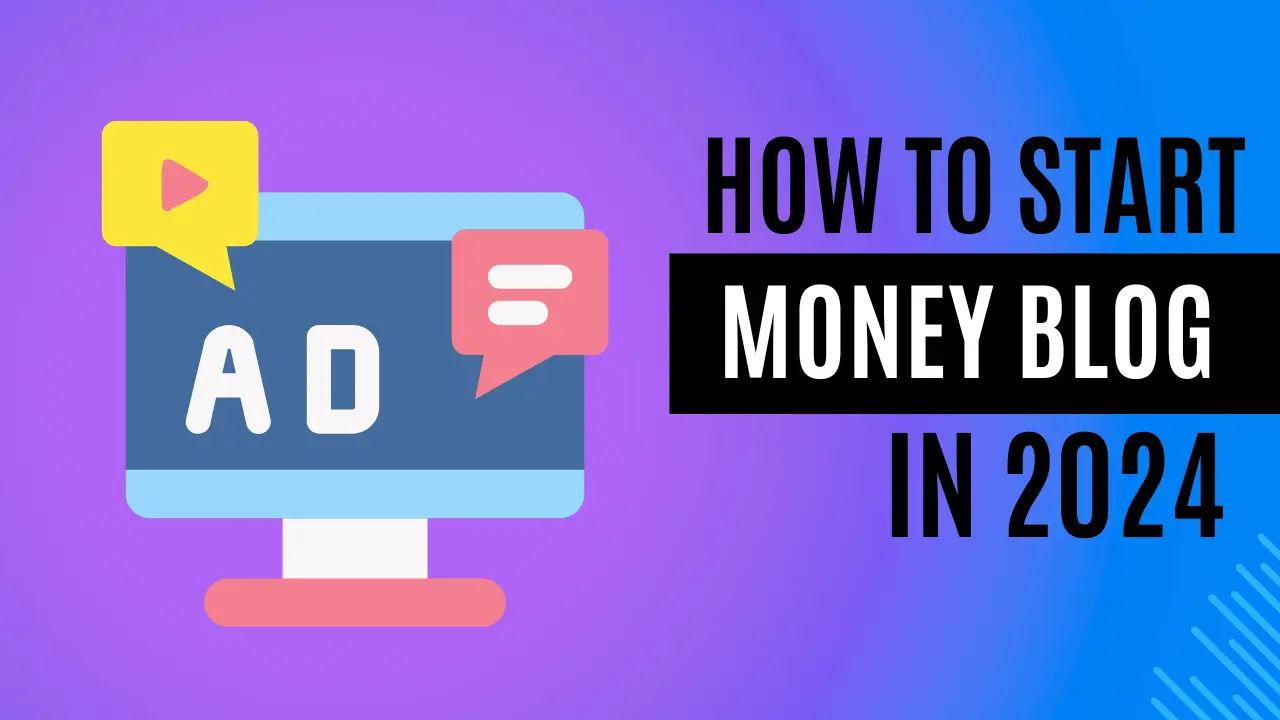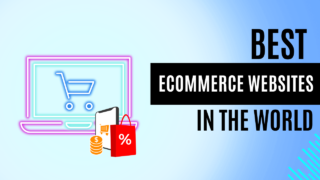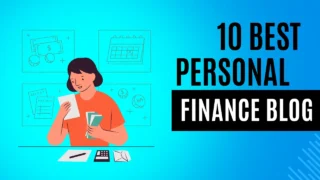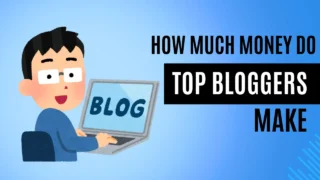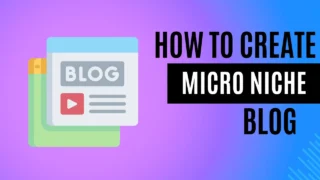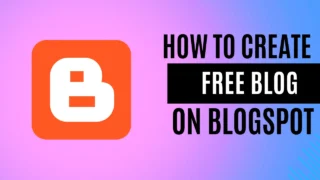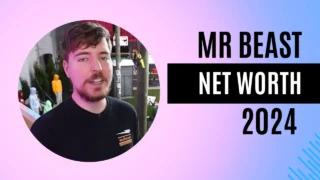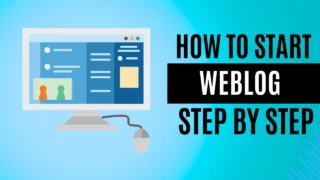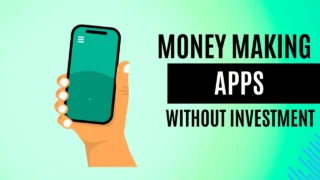Starting a blog is a great idea, but have you ever wanted to start your own blog, but felt overwhelmed by the process?
Do you have a passion, a hobby, or a business that you want to share with the world, but don’t know where to begin?
If you answered yes to any of these questions, then this article is for you. Earn a part-time or full-time income and connect with like-minded people who share your interests and passions.
In this article, I will show you how to start a blog in 2043, step by step, from choosing your blog topic and name to finding the right blogging platform and hosting to designing and customizing your blog to writing and publishing your first post, to promoting your blog and making money from it.
So, are you ready to start your blogging journey? Let’s begin!
At the end of this article, you will have everything you need to create your own successful money blog, no matter your level of experience or expertise.
What is a blog?
In the early days of the internet, blogging was similar to journaling. Some of the first blogs were intended to document individuals’ personal perspectives and experiences.
Blogging has since grown into much more than just a means of digital record-keeping. Nowadays, both businesses and individuals use blogs to exchange information and generate sales or commissions.
Reasons You Might Want To Start a Blog
There are numerous reasons to create a blog. You may want to create a blog to pursue a fun hobby, generate some extra revenue, build a community, or for any of the following reasons:
1. Document What Happens to You.
The term “blog” is a shortened version of “weblog,” which originated as a tool to document what was going on. You might want to start a blog as a way to save your thoughts and images in one location.
2. Have a creative outlet.
Blogging includes writing, editing, and, to a lesser extent, design. This makes it an extremely creative endeavor. If you want a low-cost way to express yourself, blogging is an excellent choice.
3. Share your thoughts and experiences.
No one else is you; thus, you have thoughts and experiences that are entirely your own. A blog is a forum for sharing your opinions with others, engaging in discussions, and making true connections.
4. To connect with people
Blogging is a great way to engage with others, whether they are fellow bloggers, content creators, or your target audience. Blogging allows you to meet people with whom you might not have otherwise connected. The blogging community is quite active on platforms like Facebook, Instagram, and Reddit.
5. To Get Better at Writing and Digital Marketing
Blogging is a craft. If you want to improve your writing skills, blogging daily or weekly for a blog could help.
Similarly, running a blog requires a significant amount of work behind the scenes. Bloggers frequently work as their own webmasters, social media marketers, and content writers. If you wish to improve your talents in those areas, beginning your blog will provide invaluable experience.
6. Develop Your Brand and credibility
Creating a blog can help you promote your brand and position yourself as a reputable authority in your subject or industry. Your blog post might show how knowledgeable or experienced you are about specific topics.
7. To generate sales or income.
Blogging can help you generate sales, whether you have an existing business or are starting from nothing. According to Ambition Box, bloggers earn between INR 3 lakh and INR 5.8 lakh annually, with an average of INR 3 lakh.
Misconceptions about blogs.
You do not have to be famous to start a successful blog. Anyone can blog, regardless of expertise. Here are the most common misunderstandings individuals have about beginning a blog.
Blogging is expensive.
You may create a blog for free as long as you have an internet connection. Even if you opt to pay for a custom website, domain name, or photos, the expenditures are minimal in comparison to the potential revenue from your material.
Blogging is a dying medium.
Blogging is neither dead nor dying. It is more saturated now than it was a decade ago, but that does not imply you may not have a successful business. Building a lucrative blog now may require more effort and early commitment than if you started earlier, but that should not deter you from establishing one.
Every blog post should be perfect.
You should write blog pieces that you are proud of but do not be discouraged by the concern that your content is not “excellent” or “perfect” enough. Blogs are changeable, so if you are dissatisfied with something after it has been published, you can always go back and alter it.
Starting a blog requires you to have an existing following.
You do not have to be a celebrity or have an established social media presence to start a blog. In reality, several well-known bloggers, such as Shraddha Sharma, Ashish Sinha, and Amit Agarwal, did not become renowned until after they began writing.
Blogging is easy.
In principle, blogging appears simple: compose words, push the post button, and you are done. However, unless you have a staff or have outsourced the marketing and webmaster components of running a blog, you will spend time doing more than just writing
Depending on your specialty or ambitions, you may also need to devote significant effort to studying your topic or developing supporting assets like images or videos. Blogging is not always easy, but that doesn’t mean it is not exciting or easy to implement.
Blogging is a fast way to make money.
While blogging can provide a source of income, it is not a “get rich quick” scheme. Before you can begin generating income, you must first establish an audience of people who want to buy your products.
How to Start a Blog
- Choose a blogging platform. Use templates on a customizable platform.
- Pick a hosting platform. Consider a platform with good bandwidth, uptime, and 24-hour customer support.
- Find the right niche. Narrow down your theme and have a specific audience in mind.
- Select a blog name and domain. Choose a descriptive name that piques readers’ interests.
- Set up and design your blog. Include imagery and effects that reflect your theme.
- Brainstorm blog topics. Write down all your ideas before narrowing down topic selections.
- Write your first blog post. Engage your audience with a killer title and use headers to make the content skimmable.
- Create an editorial calendar. Create a calendar to help you publish consistently and hold yourself accountable.
- Promote your blog. Use marketing strategies to expand your reach.
- Make money blogging. Take advantage of opportunities to monetize your blog.
1. Choose a blogging platform.
The first step to starting a blog is to find the right blogging platform. For example, WordPress, Medium, and Wix are the popular ones, you use to create and manage your blog.
Each platform has its own advantages and disadvantages, so you should do some research and compare them before making a decision.
WordPress is the most widely used blogging platform, powering over 40% of all websites on the internet.
It is free, open-source, and highly customizable. You can choose from thousands of themes and plugins to design and enhance your blog.
However, WordPress also requires some technical skills and maintenance, and you need to pay for your own web hosting and domain name.
2. Pick a hosting Platform
The second step to starting a blog is to set up web hosting. For example, Bluehost, Hostinger, and GoDaddy are the best web hosting (the space and resources for your blog to be accessible on the internet.) service providers.
However, You can either use a free hosting service provided by your blogging platform, or a paid hosting service that gives you more control and flexibility over your blog.
To set up web hosting and domain name for your WordPress blog, you can follow these steps:
- Go to the website of your chosen web hosting provider, such as Bluehost or Hostinger.
- Click on the “Get Started” button and choose a hosting plan that suits your needs and budget. The basic plan is usually enough for most beginners.
- Enter your domain name in the “Create a new domain” box, or use your existing domain name if you have one.
- Fill in your account information, package information, and payment information.
- Check your email for a confirmation message and follow the instructions to set up your WordPress account and blog.
3. Find the Right Niche
The third step to starting a blog is to find the right niche Let’s get away from the technical and into something more theoretical.
Consider what will serve as the cornerstone of your blog, from its URL and domain name to its content and design: your blog’s niche.
What exactly do you intend for your blog to be about? When it comes to subjects, there are essentially no restrictions.
The most important thing is to choose a specific topic area that will serve as the focal point of your entire blog and content strategy.
Fashion blogs, real estate blogs, literary blogs, and food blogs are all examples of blog types.
Because there are so many other blogs focusing on the same topics, you’ll need to find a way to stand apart while still writing about what you’re passionate about.
4. Select Blog Name & Domain
The fourth step to starting a blog is to choose your blog name and domain. Your blog name should be something that you are interested in, knowledgeable about, or want to learn more about. It should also be specific enough to attract a niche audience, but broad enough to have enough content ideas. For example, if you love traveling, you can start a travel blog, but you can also narrow it down to a specific type of travel, such as solo travel, budget travel, or adventure travel.
Your blog domain should reflect your blog name and be catchy, memorable, and easy to spell. You can use your own name, a wordplay, a pun, or a combination of words that describe your blog. For example, some popular travel blog names are Nomadic Matt, The Blonde Abroad, and The Broke Backpacker.
5. Design and customize your blog
The fifth step to starting a blog is to design and customize your blog. This is the fun part, where you can make your blog look and feel the way you want. You can use the “Customize” button under the “Appearance” tab to change your theme’s settings, or you can use plugins or extensions to add more features and functionality to your blog. Plugins are software components that extend the capabilities of your WordPress blog, such as SEO, social media, analytics, security, and backup. You can browse and install plugins by clicking on the “Plugins” tab on the left sidebar and then on the “Add New” subtab. Some of the essential plugins for bloggers are:
- Yoast SEO: This plugin helps you optimize your blog for search engines, by providing you with tools and suggestions to improve your content, keywords, titles, meta descriptions, and more.
- Jetpack: This plugin provides you with a suite of features and services, such as site stats, social sharing, contact forms, spam protection, backups, and more.
- Akismet: This plugin helps you combat spam comments and trackbacks, by automatically filtering and deleting them.
- WPForms: This plugin helps you create and manage forms on your blog, such as contact forms, feedback forms, surveys, polls, and more.
- Elementor: This plugin helps you create and edit beautiful and responsive web pages, by using a drag-and-drop interface and a variety of widgets and templates.
06. Brainstorm blog topics
On the technical side, your blog is now set up and ready to go. It’s time to start thinking about which topics you’ll get started with.
Begin by thinking about your experiences, successes, failures, or discoveries related to your niche. What insights can you share? What ideas are you looking to explore in-depth?
As you think of topics, try to get into your readers’ heads. Here are some questions to guide you through the brainstorming process:
7. Write and publish your first post
The sixth step to starting a blog is to write and publish your first post. You should write about something that you are passionate about, that provides value to your readers, and that showcases your personality and voice.
You should also use headings, subheadings, bullet points, images, videos, and links to make your post more engaging and readable. Don’t forget to proofread and edit your post before hitting the publish button.
To write and publish your first post, you can follow these steps:
- Click on the “Posts” tab on the left sidebar and then on the “Add New” subtab.
- Enter your post title in the “Enter title here” box. Your post title should be catchy, clear, and relevant to your post content and keywords.
- Enter your post content in the “Start writing or type/choose a block” box. You can use the block editor to add different types of content, such as paragraphs, headings, lists, images, videos, quotes, and more. You can also use the classic editor to write your post in a single text area.
- Add a featured image to your post by clicking on the “Featured Image” tab on the right sidebar and then on the “Set featured image” button. A featured image is the main image that represents your post and appears on your blog homepage and in social media shares.
- Add categories and tags to your post by clicking on the “Categories” and “Tags” tabs on the right sidebar. Categories and tags are ways to organize and label your posts based on their topics and keywords.
08. Create an editorial calendar
Whew! You have just written your first blog entry. Take a break, and when you are ready, schedule the rest of the month’s posts.
Creating an editorial calendar is a key step in launching a blog. It is an effective approach to ensure that you publish content constantly, holding yourself accountable as a writer and staying on track with your blogging goals.
Your readers expect new stuff, and you must give. Furthermore, search engines consider how frequently you publish when calculating your site’s overall position.
You probably already have a few ideas from your brainstorming session in Step 6. If not, repeat the process to generate new ideas. When you have at least ten ideas, start creating a content calendar.
Your calendar does not have to cost anything, and it does not necessitate the use of new tools or platforms.
Open Excel or Google Sheets and start creating a timetable from there. The columns you choose are entirely up to you, but you should definitely make separate sections for the publishing date, blog title, main keywords, article status, and comments.
09. Promote your blog
Share via social media.
Create a blog newsletter.
Write for other websites.
Reach out to an existing community.
Participate in question and discussion websites.
Invest in paid advertisements.
Test new content forms.
At this point, you have everything you need to launch a blog. The final few phases will focus on how to promote your blog and turn it into a viable income instrument.
10. Make money blogging
Affiliate marketing.
Advertise in your blog.
Offer premium subscriptions.
Write sponsored content.
Sell e-books and products.
Provide consultation services.
If you want to start a blog with a significant following, you probably want to generate money from its success.
We mentioned affiliate marketing previously in the post, but let us go over it in more detail, as well as other money-making tactics that can help you produce passive revenue from your writing.
READ MORE: How To Make Money Online
Bottom line
Starting a blog may be an informative, entertaining, and profitable way to communicate with others.
Maintaining a blog means wearing several hats, but if you are willing to learn and grow in an ever-changing medium, you will most likely find fulfillment and success.
FAQs
Bloggers can receive payment in a variety of ways, including:
Bloggers can sell advertising space on their blogs to businesses. The amount of money bloggers make from advertising varies according to the size and popularity of their blogs.
Affiliate marketing allows bloggers to promote other people’s products or services on their sites and earn a commission on each transaction.
Sponsored posts: Bloggers can write about certain items or services in exchange for remuneration from the company that makes them.
Bloggers can generate and sell digital products such as ebooks, online courses, and templates.
Bloggers can sell actual objects, such as merchandise or handcrafted items.
Bloggers can set up membership sites in which readers pay a monthly or annual fee to access unique content or tools.
The greatest method for bloggers to make money is to diversify their income streams. In this manner, if one source of money becomes unavailable, they will still have other options.
Yes, blogs can be viable companies that produce revenue through a variety of monetization tactics. Common approaches include advertising (e.g., Google AdSense), sponsored content, affiliate marketing, selling digital or physical things, providing services, and membership/subscriptions. To maximize revenue possibilities, successful bloggers frequently diversify their income streams and prioritize giving value to their audience.
A blog can include a full website, although not every website is a blog. A blog is a website or component of a website that publishes articles. A website might serve as a blog, a business, or an informational resource.
Your blogs do not need to be a specific length. However, if you are attempting to optimize your blog post for a specific keyword, you may need to aim for a certain length for your article to rank highly in search results for that topic. Compare your content to that of your competitors to get a sense of what to strive for.
